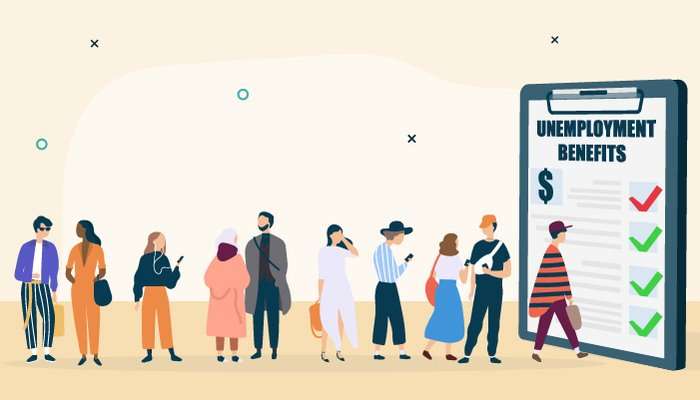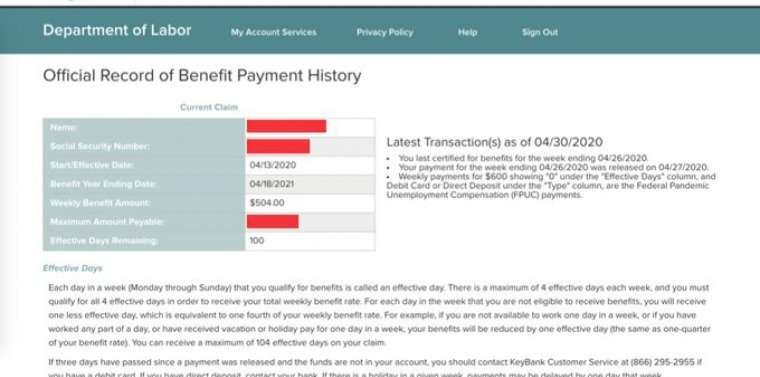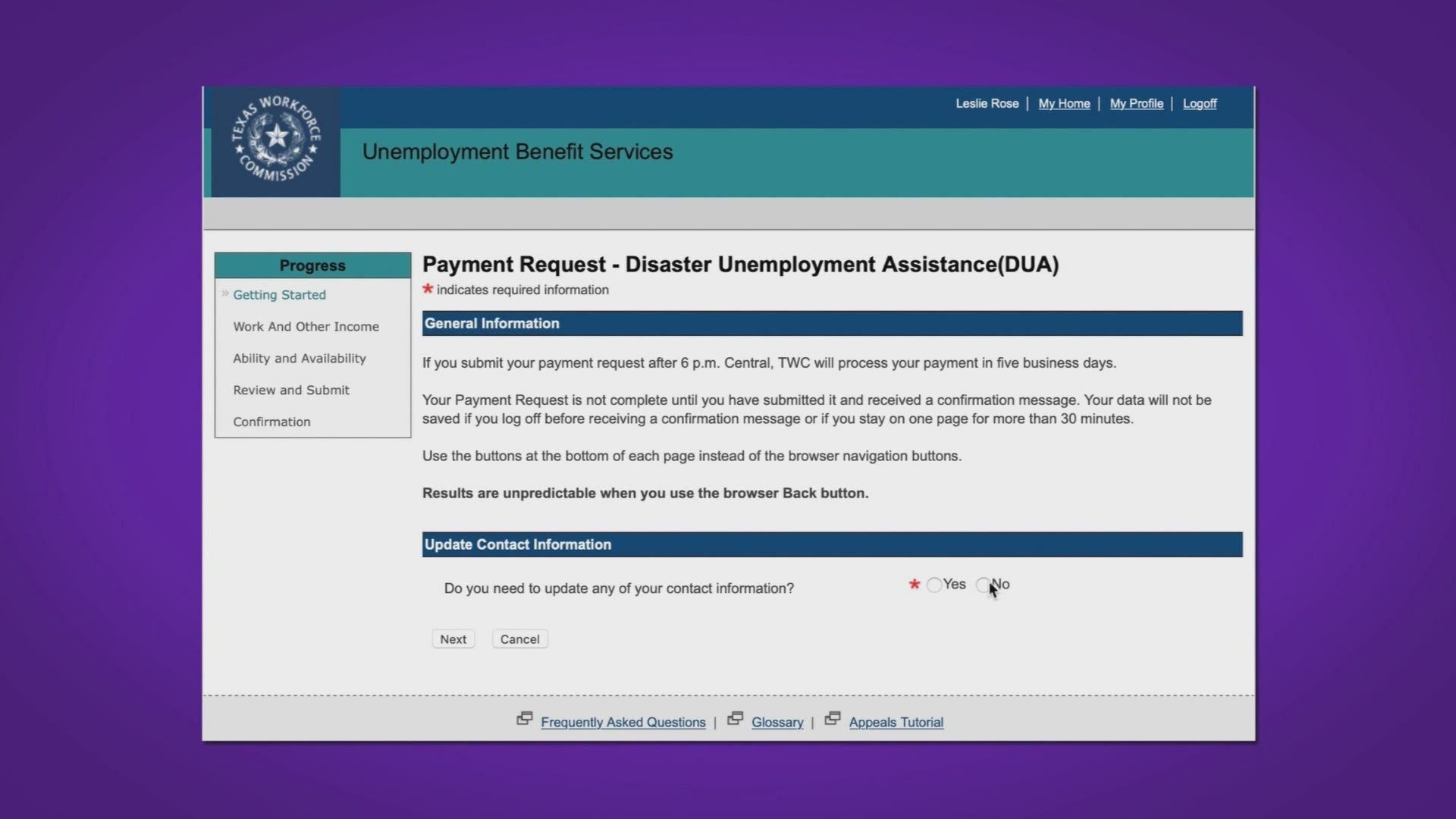Q: Can I Receive Unemployment While Attending Classes At Cet
A: Yes, students are eligible to receive their unemployment insurance payments while attending classes. This program is known as the California Training Benefit and CET is one of the approved programs. This benefit allows students to continue receiving their unemployment benefits while in school and even allows them a training extension, if needed.
Information For Students Receiving Unemployment
When youre receiving unemployment insurance benefits , Employment Security is paying you to look for work and be available to accept work. ESD considers school a conflict with availability, so you must request approval for your program and show why you need to upgrade your skills or change occupations. This is done through the CAT/TB application . Worker Retraining provides assistance with this process and a weekly CAT/TB Workshop is available.
How Do I Return Unemployment Benefits I Shouldn’t Have Received
If you received unemployment benefits you were not eligible for , we will send you a notice. It is important to repay this benefit overpayment as soon as possible to avoid collection and legal action. After receiving a notice, visit Benefit Overpayment Services to learn how to repay an existing overpayment.
If you want to repay these benefits before receiving a notice, review the following:
- Benefit check not cashed Return the original check to the EDD.
- Benefit check cashed Send a personal check, cashier’s check, or money order made payable to the EDD.
- Debit card If the funds are still on your card, transfer them to your bank account and then repay them by sending a personal check, cashierâs check, or money order made payable to the EDD.
Include a letter with the following information:
- Name.
- Social Security number or EDD Customer Account Number .
- Week or weeks that the returned payment applies to.
- Reason for returning the benefits.
- Date you returned to work .
- Gross earnings for each week of benefits being returned .
Mail the payment and letter to:
Employment Development Department Overpayment CenterPO Box 66000
Recommended Reading: Njuifile.net Sign In
Alternatives To Unemployment Benefits
If you don’t qualify for unemployment while in school or after graduation, or your benefits have run out, you may have other options to close the financial gap. For instance, you may be able to enter a vocational training program that pays while you’re in school, so you earn an income while learning new skills.
If that’s not an option, managing your finances while you’re out of work can mean going back to basics. Reviewing your spending and trimming down your budget can help. Moving back home with your parents could be a temporary solution for saving money. You could also consider selling things you don’t need to raise extra cash while you look for a job.
What Are Employment Insurance Sickness Benefits

The Employment Insurance program offers temporary financial assistance to unemployed workers. This assistance includes providing sickness benefits to people unable to work because of sickness, injury, or quarantine.
If you cannot work because of sickness, injury or quarantine, but you would otherwise be available to work, you could be eligible to receive up to a maximum of 15 weeks of EI sickness benefits.
Also Check: Where Do You Go To Apply For Unemployment
How Current Students And Recent Grads Can Make Ends Meet
Working while attending college is fairly common, and its a necessity for many students. But if you lose your job while in college, you might be wondering whether you qualify for unemployment insurance benefits.
States set the requirements for unemployment eligibility, which include minimum guidelines for work history and previous earnings. Typically, those requirements could make it challenging to get unemployment benefits as a college student. But understanding all your options can help you find financial relief if you lose your job while in school.
Unemployed College Students Are Eligible For Unemployment Benefits
JACKSONVILLE, Fla Many college students have finances on their minds as the fall semester is right around the corner.
So many students have struggled as many jobs have been lost, and they are not eligible for state unemployment benefitsbut that should not stop them from applying.
Typically, state unemployment benefits arent available to college students, as the state would say they are not willing and able to work if any job opportunity came up.
The CARES Act brought Federal Pandemic Unemployment Assistance, which basically fills in the unemployment gaps. Many people who werent eligible for state benefits are eligible for PUA.
If students have lost their job due to COVID-19, they should be eligible for benefits.
A lot of students gave up at the beginning, said Vanessa Brito, who has helped hundreds of students navigate the unemployment system. This is probably the first time a lot of them had to deal with this process, and their parents as well.
People must first apply and be denied for typical state benefits to be directed to the PUA application.
The link to the PUA application should show up in the CONNECT portal, but weve found many times it doesnt. In that case, Brito says you should reapply.
There are no adverse effects to doing so, Brito said. And they should apply on the PEGA site instead of CONNECT.
Reapplying on the PEGA site prompts a DEO agent to see what the problem is and make the PUA link available in the CONNECT portal.
Don’t Miss: How Do I Sign Up For Unemployment In Indiana
To Apply For Ctb Follow These Steps:
Step 1: Meet journey level union member eligibility requirements.
You must be a journey level union member in good standing with your union. The EDD will confirm your current union status.
Step 2: Report school or training.
Report school or training to the EDD during the week you begin attending. For more information, visit How to Report School or Training.
Step 3: Complete an Application.
After you report your school or training, you may receive one of the following application forms:
- California Training Benefits Application
- California Training Benefits Application and School or Training Questionnaire
- Notification of Unemployment Insurance Benefits Eligibility Interview
If you do not receive one of these forms and want to apply, visit Contact UI to inquire.
Important: Provide all necessary information to help us determine your CTB eligibility.
Step 4: Receive notification about your CTB eligibility.
Your CTB eligibility is based on the information you provide on your application or during your phone interview. You will receive a Notice of Unemployment Insurance Determination that contains your CTB eligibility, general rights and responsibilities, and appeal rights.
Journey level trade association members who participate in industry-related school or training programs may be eligible for CTB. The training must be sponsored and funded by one of the following:
- A trade association
- Joint Apprenticeship Committee
- Joint Apprenticeship Training Committee
Five Ways Michigan Can Help Working Students Access Benefits
-
Jen Mishory
Contributor
The COVID-19 pandemic has crippled state and local economies around the country, with Michigan being no exception. About 1.7 million Michigan residents have filed jobless claims since the start of the pandemic, and many of those filers are likely students. In fact, of the almost half a million college students in the state, almost 70 percent work. Many work significant hours on top of their studies: about 41 percent work over twenty hours per week, and about 26 percent work over thirty hours per week.1
To maximize the support the state provides to its working students during the COVID-19 recession, Michigan can change state policy to make unemployment insurance protections more accessible.
Also Check: How To Earn Money When Unemployed
Getting Unemployment When You Quit Your Job
Unemployment benefits are intended to bridge the gap between one job and the next, providing workers with monetary payments until they find a new jobor at least, for a period of time determined by the state they live in.
Each state determines what constitutes good cause to quit.
These benefits are intended for workers who suffer an unexpected loss in income due to layoffs, or in some cases, due to being fired. In most cases, if you quit voluntarily, you are not eligible for these benefits. However, if you resign for good cause you may be able to collect unemployment benefits.
Workforce Innovation And Opportunity Act
The WIOA allows North Carolina to train its workforce. An individual can seek assistance with career services and support for their education and training under WIOA. The first step is to contact a local NC Works Career Center.
A claimant can also do a search of which educational providers in their local area are using NC Works. For example, a search on Carteret Community College reveals eight pages of training programs that are approved under the WIOA. Offerings include an administrative assistant certificate program and basic law enforcement training. The program for which a full-time student was in school prior to the start of the COVID-19 pandemic may not be on the list of WIOA-approved programs.
Recommended Reading: What Is Pa Unemployment Rate
Claimants And Financial Aid
A person who is currently claiming unemployment benefits may be able to demonstrate a strong need for federal financial aid, as well as state financial aid and scholarships. The federal Pell Grant program in particular provides need-based higher education grants to low-income undergraduate and certain post baccalaureate students. Once the student begins their program of study, they may no longer be eligible to claim unemployment benefits.
References
What Students Might Receive

Full-time students are eligible for benefits, according to April guidance from the Department of Labor. They must have worked part-time, have filed a tax return and be unemployed or unable to work because of a reason related to Covid-19.
The additional federal weekly $600 enhancement ended in July, but students, even when claimed as a dependent on a parent’s return, can still apply for a benefit based on state calculations from their 2019 tax returns or a minimum payment of half their state’s average weekly benefit. That average weekly amount varies significantly by state, from $466.06 in Minnesota to $213.67 in Louisiana.
People can receive up to 39 weeks of core benefits from pandemic aid.
Also Check: Collecting Unemployment While Starting A Business
Attending College While Unemployed
You can still collect unemployment while in college. You will need to show that you are still willing and able to work while you are in school. You will have to continue to look for work and accept any position offered to you. If an employer offers you are a full-time position and you turn it down due to school commitments, then you will lose your unemployment benefits.
Virginia May Require That You Are Eligible To Work In Order To Obtain Unemployment Insurance Benefits
The Virginia Employment Commission currently requires all people receiving UI benefits to be available for work, which typically means that you are available from 9 a.m. to 5 p.m., the schedule for the majority of full-time jobs in America.
This can mean youre able to take night classes, weekend classes, or self-paced online courses, but if you take daytime classes or are a full-time student, then you may not be eligible.
You can contact the VEC Customer Contact Center at 1-866-832-2363, to determine if your schooling or training will create an issue.
You must also inform the VEC of any changes to your class schedule or any changes in general that affect your availability for regular work.
Visit to learn more about UI availability while attending classes, and visit to begin applying for unemployment benefits now.
You May Like: Are Unemployment Benefits Delayed On Holidays 2020
You Meet The Specific Criteria For Receiving Ei Maternity Or Parental Benefits
EI maternity benefits are payable only to the biological mother who is unable to work because she is pregnant or has recently given birth. To receive maternity benefits, you need to prove your pregnancy by signing a statement declaring the expected due date or the actual date of birth.
EI parental benefits are payable only to the biological, adoptive, or legally recognized parents while they are caring for their newborn or newly adopted child or children. To receive parental benefits, you must sign a statement declaring the newborn’s date of birth or, when there is an adoption, the child’s date of placement for the purposes of the adoption and the name and address of the adoption authority. In cases where the child is not legally adoptable, parental benefits could be payable from the date you attest that you consider the placement a permanent one. In these circumstances, the Commission may, at any time, request proof certifying that the child for whom you are claiming parental benefits has been placed with you by a recognized authority and that the placement was not merely a temporary one.
You Have Paid Ei Premiums
If you are employed in insurable employment, your employer will deduct EI premiums from your wages or salary. These premiums go into the EI Fund. There is no minimum or maximum age for paying EI premiums.
You pay EI premiums on all your earnings up to a maximum amount. In 2020, for every $100 you earn, your employer will deduct $1.58, until your annual earnings reach the maximum yearly insurable amount of $54,200. The maximum amount of premiums to be paid in 2020 is therefore $856.36.
Since Quebec has its own program that offers maternity, paternity, and parental benefits, the Government of Canada has adjusted the premiums accordingly for that province. In 2020, the premium rate for workers in Quebec is set at $1.20 for every $100 of earnings, up to a maximum amount of $650.40 for the year.
Also Check: Njuifile Login
Background On Students And Ui In Michigan
Many states put limitations around student eligibility for their traditional UI program, and Michigan is no exception. The state unemployment insurance operating rules do not mention students, and their FAQs state that going to college does not necessarily mean that a student cannot receive unemployment benefits. However, some of the restrictions around receiving UI benefitsnamely that a worker must earn a base wage of about $3,298 in one quarter, and the requirement that workers must be willing to accept full-time work in order to receive benefitsmeans that many students may not qualify. And the state has said in subsequent publications that a student would need to be willing to rearrange or drop classes if they find a full-time job to be eligible .
The Pandemic Unemployment Assistance program has broader eligibility. PUA provides federal dollars for unemployment insurance for those who typically would not qualify under state unemployment insurance programs. Part-time workers, those without sufficient work history, and independent contractors fit into that category, as long as they have lost their job due to the COVID-19 crisis, including through a business closure, a lack of child care, or a direct experience with the virus.
Sign up for updates.
You Have Accumulated At Least 600 Hours Of Insurable Employment During The Qualifying Period
Hours of insurable employment are the hours you work, for one or more employers under written or verbal contracts of service, for which you receive wages.
The qualifying period is the shorter of:
- the 52-week period immediately before the start date of your EI claim or
- the period since the start of a previous EI benefit period, if that benefit period started during the last 52 weeks.
To be eligible for EI sickness benefits, you must have accumulated at least 600 hours of insurable employment in your qualifying period.
If you are a self-employed fisher, you must have earned $3,760 from fishing during the 31-week qualifying period immediately before the start of your benefit period. For more information on EI benefits for self-employed fishers, consult the guide called Employment Insurance Benefits for Fishers .
Read Also: Can You Add Money To Unemployment Card
Quitting And Then Going To College
It is possible to quit your job and collect unemployment while in college. However, the situation raises some questions. Unemployment agencies are likely to believe that you quit your job solely to go to school. You will have to meet the burden of showing that you had extenuating circumstances for leaving your job and show why you are still able to attend school after that. Unemployment centers may feel that if you can attend school, then your problems are not serious enough to justify quitting your job. Although it’s not impossible to meet this burden, it can be difficult.
Eligible Training Types For California Training Benefits

If you are eligible, California Training Benefits allows you to receive Unemployment Insurance benefits while you attend school or training. On this page, youâll find:
- A complete list of training types for each category.
- Eligibility requirements for each program.
- Instructions on how to report school or training to the EDD.
- Information on how to apply for CTB.
If approved for CTB, you will be exempt from the requirements to be available for work, to actively seek work, and to accept work, while attending school or training. It is important that you continue to certify for UI benefits while you attend school or training.
If you are not eligible for CTB, you may continue to receive UI benefits while attending school as long as you meet all other UI eligibility criteria. You must be able to work, available for work, actively seek work, and accept work each week you certify for benefits.
Note: The EDD does not pay for any educational or training-related expenses such as tuition, fees, books, supplies, or transportation. However, there are state, federal, and employer assistance programs that may fund your school or training. Self-arranged training may require that you pay your own expenses.
For more information, visit Workforce Innovation and Opportunity Act.
Read Also: Unemployment Quit For Good Cause
